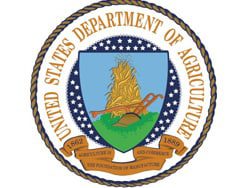
A vital food safety program was saved from budget cuts this week, enabling the country’s largest—although considered by experts to be far too small—produce-safety testing program to continue. The U.S. Department of Agriculture (USDA) gave the program a reprieve, said the Associated Press (AP). The program, while small, screens thousands of fruit and vegetable samples, […]
 A vital food safety program was saved from budget cuts this week, enabling the country’s largest—although considered by experts to be far too small—produce-safety testing program to continue.
A vital food safety program was saved from budget cuts this week, enabling the country’s largest—although considered by experts to be far too small—produce-safety testing program to continue.
The U.S. Department of Agriculture (USDA) gave the program a reprieve, said the Associated Press (AP). The program, while small, screens thousands of fruit and vegetable samples, finding more than two-dozen tainted samples that led to recalls last year.
The program was in jeopardy when President Barack Obama’s proposed budget cut its funding this year; however, USDA spokesman Justin DeJong said that while the Microbiological Data Program “does not align with USDA’s core mission,” it will operate through the end of the year, utilizing agreements in place with states to continue testing for Salmonella, E. coli, and Listeria pathogens, the AP wrote.
Food safety advocates and public health officials maintain that abandoning the program would leave the United States without an important tool that looks into deadly food borne illness outbreaks. Should a sample test positive for a bacteria, the program, enables the prompting of a nationwide recall, ensuring the contaminated product does not reach consumers, said the AP.
Dr. Robert Tauxe, the U.S. Centers for Disease Control and Prevention’s (CDC) leading food borne pathogenic investigator, said the program’s information can be critical to locating foods linked to outbreaks, said the AP. Dr Tauxe noted that the program could not readily be replaced by either individual companies’ internal tests or smaller federal sampling programs. According to the CDC, contaminated fruits and vegetables were the culprit in about one-third of the major multi-state food borne illness outbreaks in 2011. In fact, we wrote earlier this year that food poisoning outbreaks linked to imported foods are on the rise, according to the CDC.
Longtime food safety advocate, Representative Rosa DeLauro (Democrat-Connecticut) indicated that she would continue to work for the program to extend beyond the end of the year; neither the House nor Senate have included funding for the program in their agriculture spending bills, said the AP. “I am glad to hear the program will continue, but a temporary reprieve is not enough. It is unacceptable for this crucial, cost-effective program to be eliminated,” she said. The program cost $4.3 million to run last year. Money to fun the program has been a challenge and the AP noted that the FDA can only afford to conduct some facility inspections once every five or 10 years.
Meanwhile, industry groups—such as the United Fresh Produce Association—have asked the government to lose the USDA program, claiming it cost growers millions in product recalls that that it said unfairly targets farmers not responsible for contaminating the food, said the AP. Instead, industry seeks increased private sector testing that occurs before produce leaves its companies.
We recently wrote that a number of issues are leaving Americans vulnerable to food borne infection outbreaks, with reporting of these illnesses being, at best, inconsistent, and leaving most consumers vulnerable before health officials can identify outbreaks and recall contaminated foods. Salmonella appears to be the most prevalent, comprising about 60 percent of the multi-state outbreaks that have been reported in the past five years by the CDC. About 1 million people fall ill yearly with salmonellosis, the illness caused by Salmonella poisoning.
Also, differences nationwide put residents living in the worst performing states at increased risk and can mitigate national food borne illness outbreak surveillance. In larger outbreaks, worst performers adversely impact other states’ surveillance and rely on other states to catch what they’ve missed; smaller outbreaks are often completely missed.


